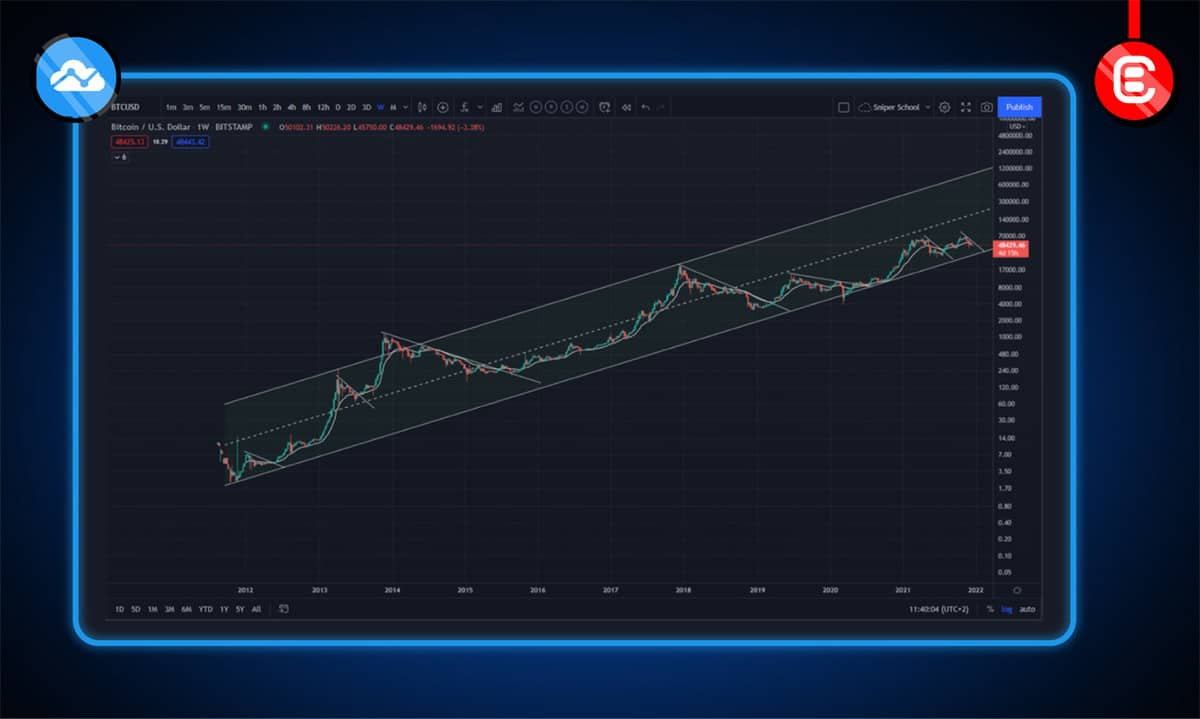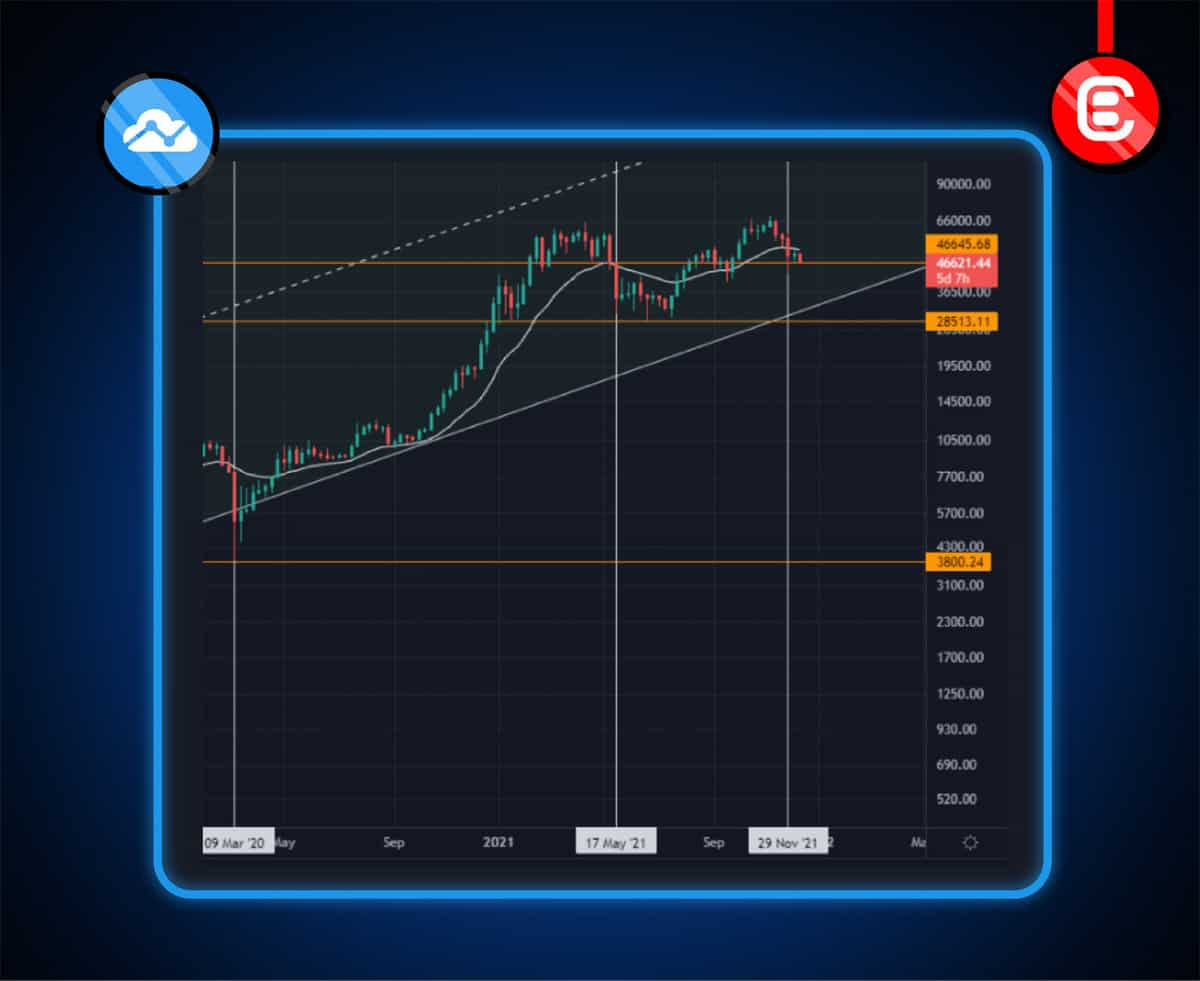There are only a handful of indicators that are considered reliable indicators to check the long-term health of Bitcoin (BTC), and one of them has just turned negative.
In a new series of articles, we explain these indicators to you so you can keep an eye on them yourself in the future.
The 21 Weekly Exponential Moving Average (21WEMA) is known as one of the best ways to check the long-term health of Bitcoin.
What is a Moving Average and Exponential Moving Average line?
A moving average is a mathematical calculation that quantifies and plots a line of the average price over a period of time. Moving averages are very popular in trading because, being mathematical calculations, they are not open to interpretation.
There are two main types of moving averages, a Simple Moving Average (SMA) and an Exponential Moving Average (EMA). The SMA calculates the average price evenly across all periods, while the EMA skews the calculation to the more recent data. Plotting the SMA or EMA on a graph gives you their “line”. The line is a clear visual indicator of whether a market is trending upwards, downwards or sideways.
The 21WEMA is a particular type of EMA that calculates an exponential moving average over 21 weeks.
A more indepth look at how moving averages are calculated is available here.
Why do traders use moving averages?
A moving average line on a trader’s chart helps to remove the “noise” of price data and shows a smooth line that reveals the trend of the market.
When price candles are above the moving average line, the market is considered bullish (in a bull-trend). When the price is below the moving average line the market is seen as bearish or we are in a bear-trend.
What is the 21WEMA telling us now?
Below is the weekly price chart of Bitcoin since 2011 on a logarithmic scale. The 21WEMA line is the white line running with the price candles.
Chart 1: Bitcoin weekly price logarithmic scale with white 21 WEMA line

https://www.tradingview.com/chart/BxNfd1rg/
We can visually see that when the price is above the 21WEMA we are in an uptrend and that the line actually provides support to the price. The price can come down to the trendline, but the 21WEMA acts as a buffer to support the price.
When the price falls below the 21WEMA, we have the potential to go into a long-term downtrend, unless the price recovers quickly to get above the line. This is seen very clearly around February 2014 and again in February 2018. In a downtrend, the 21WEMA acts as resistance, preventing the price from breaking through it.
Basically, it is ok for the price of Bitcoin to fall below the 21WEMA, but it needs to recover quickly to ensure the bull market gets back on track.
Chart 2 below is a zoomed-in section showing the three most recent drops below the 21WEMA.

Chart 2: Bitcoin weekly price logarithmic scale from 9 March 2020 to 14 December 2021
https://www.tradingview.com/chart/BxNfd1rg/
The drop on 9 March 2020, known as the Corona drop, took 8 weeks to recover from.
17 May 2021 was the last big bear market which dropped Bitcoin from $65k to $28. The price took 11 weeks to recover.
On 29 November 2021 Bitcoin dipped below the 21WEMA again. We are now in the third week of Bitcoin trading below the 21WEMA.
The Bitcoin bulls need to show up quickly to get the price above $52k and get the bull market back on track. If this doesn’t happen, we can enter into another lengthy bear market.







